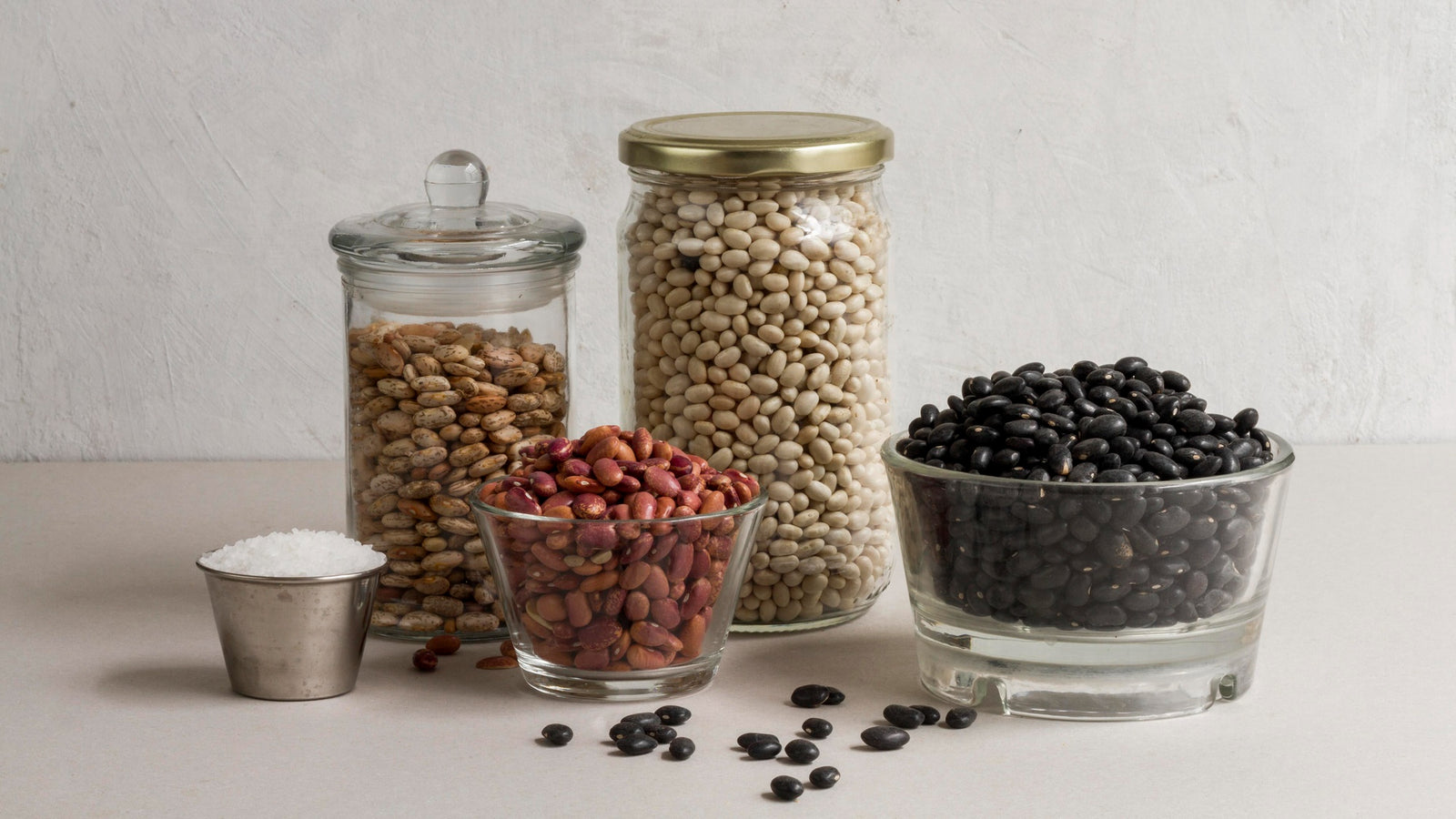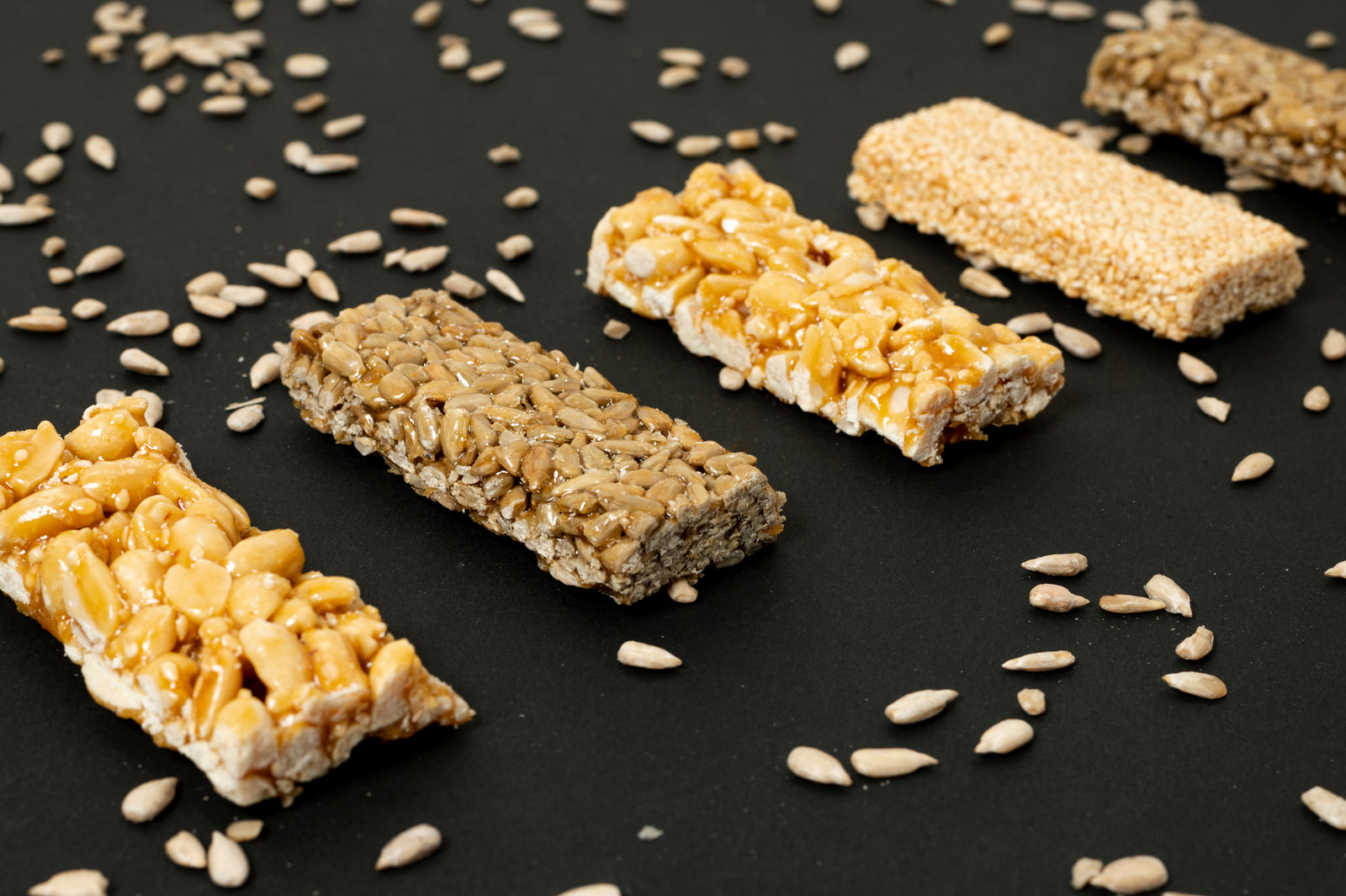
April 24, 2024 3 min read
Beans are a staple in diets around the world, revered for their versatility, nutritional benefits, and affordability. Among the myriad of varieties, pinto beans, small red beans, and black beans stand out in many regional cuisines, each bringing its unique qualities to the table. This article delves into the distinct differences between these three popular types of beans, from their nutritional profiles to their culinary uses and cultural significance.
Pinto Beans: Often spotted in Mexican and Southwestern American dishes, pinto beans are beige with speckles of brown, though they turn a uniform brown when cooked. Nutritionally, they are packed with fiber and protein, making them an excellent heart-healthy food. They also contain important vitamins and minerals like vitamin B1, iron, magnesium, and potassium.
Small Red Beans: Commonly used in Caribbean and Creole cooking, small red beans are smaller in size as compared to kidney beans and have a darker, more vibrant red hue. They are rich in antioxidants, which help combat oxidative stress and inflammation. Like pinto beans, they are also a great source of iron and protein, supporting muscle health and energy levels.
Black Beans: A staple in Latin American cuisines, black beans are small, shiny, and true to their name, black. They boast a higher content of antioxidants than many other beans, attributed to their dark color. Black beans are also rich in fiber and protein, and have a substantial amount of flavonoids, which have potent anti-inflammatory properties.

Pinto Beans: These beans are often found in refried beans, chili, and burritos. Their creamy texture makes them ideal for dishes that require a thick, rich consistency. When cooked, pinto beans become soft and flavorful, which makes them perfect for absorbing spices.
Small Red Beans: Known for their firm texture and slightly sweet flavor, small red beans hold their shape well, making them ideal for simmered dishes like Louisiana red beans and rice, soups, and stews. They are also commonly used in salads and other recipes where a more defined bean shape is preferred.
Black Beans: With a dense, meaty texture, black beans are frequently used in vegetarian dishes, soups, and salads, and are a favorite in black bean salsa and Brazilian feijoada. Their robustness makes them suitable for longer cooking times, and their dark color provides a striking contrast in dishes, enhancing the visual appeal.
Each type of bean benefits from soaking, which reduces cooking time and makes them easier to digest. Pinto beans typically cook faster than the other two types, becoming tender in about an hour of boiling. Small red beans, with their firmer texture, may require a bit more time, whereas black beans, due to their density, often need the longest cooking time.
Beans are more than just food; they carry cultural stories and traditions. Pinto beans have been a backbone in Mexican and Tex-Mex cuisines, symbolizing rustic and hearty cooking. Small red beans are iconic in Caribbean dishes, representing the fusion of Native American and African culinary influences. Black beans are deeply embedded in the culinary traditions of Central and South America, reflecting the region's history and its people’s reliance on this nutritious staple.
Pinto beans, small red beans, and black beans each offer unique flavors, textures, and health benefits. Understanding their differences can enhance your culinary experiences and allow you to choose the best bean for your cooking needs. Whether making a spicy chili, a comforting stew, or a refreshing salad, these beans can add nutrition and enjoyment to your meals. Experimenting with these varieties not only broadens your palate but also connects you with a rich tapestry of cultural traditions.
Comments will be approved before showing up.

May 15, 2024 2 min read
Discover the top 7 pregnancy-friendly grains to help you maintain a healthy and balanced diet. From quinoa to teff, these nutrient-packed grains provide essential vitamins, minerals, and fiber that are crucial for both mother and baby. Elevate your pregnancy diet with these versatile and delicious grains!

May 13, 2024 2 min read
Elevate your fish dishes with these top 10 grain-based garnishes. From citrus quinoa salad to earthy wild rice pilaf, these fresh and flavorful garnishes add texture and nutrients to complement your favorite seafood. Perfect for creating memorable and delicious meals!

May 08, 2024 2 min read
Discover quick and nutritious grain-based snacks perfect for busy lifestyles. From no-bake oatmeal energy balls and quinoa crunch bars to savory millet muffins and homemade wheat thins, these easy-to-prepare snacks offer a healthy, satisfying way to stay energized on the go. Whether you're craving something sweet or savory, there's a grain-based snack here for everyone.
© 2024 Be Still Farms- Real, Fine Organics.
Privacy | Terms | Refund Policy | Organic Certification
